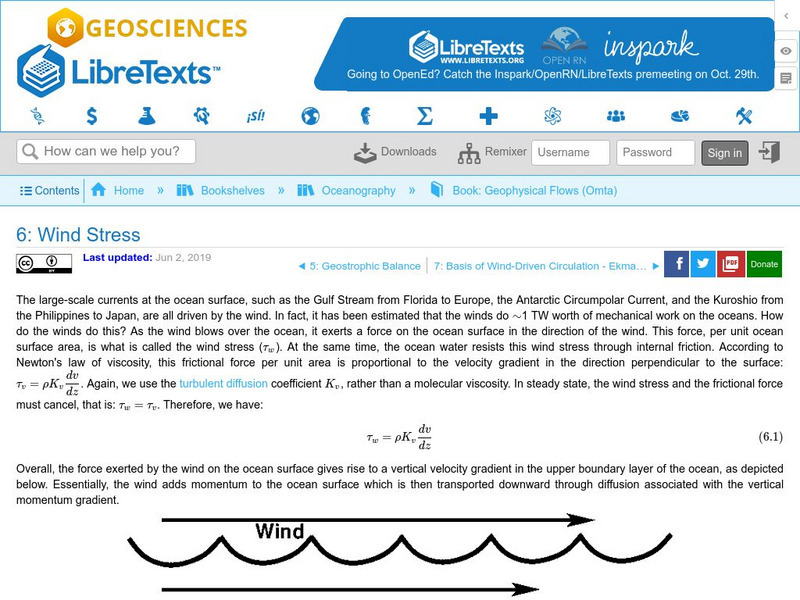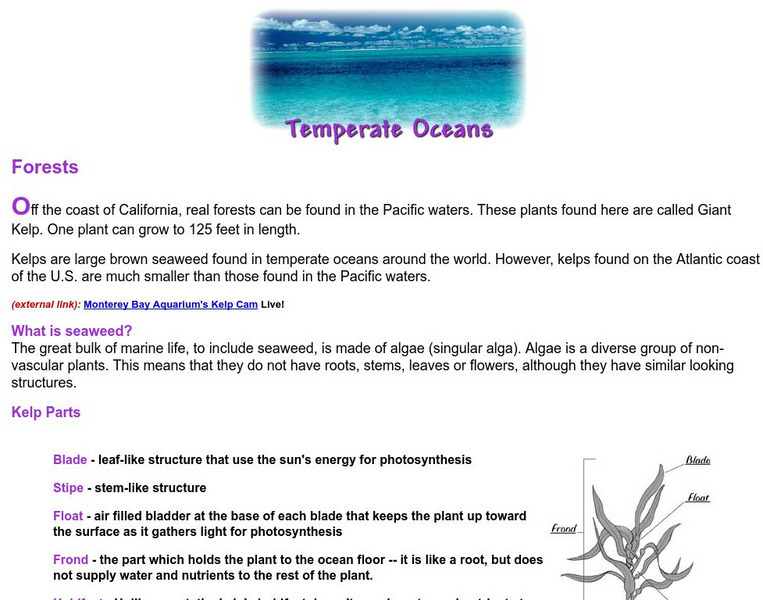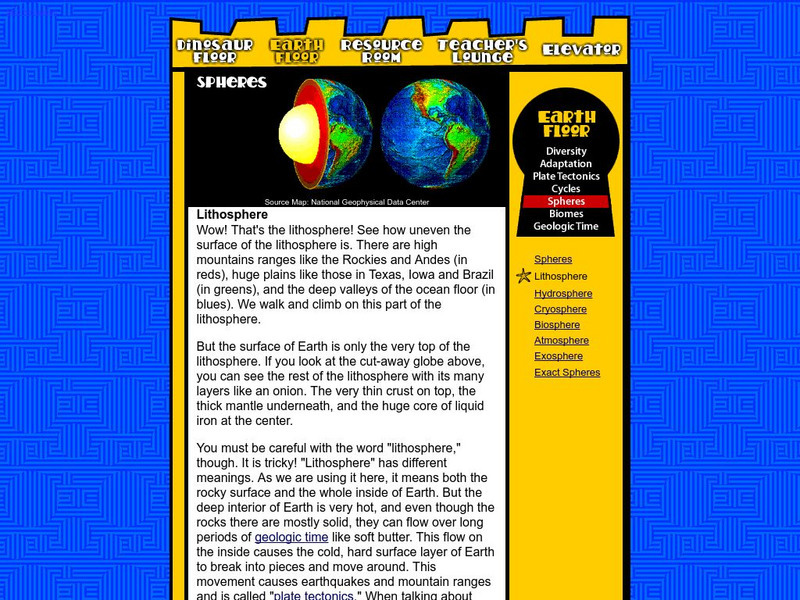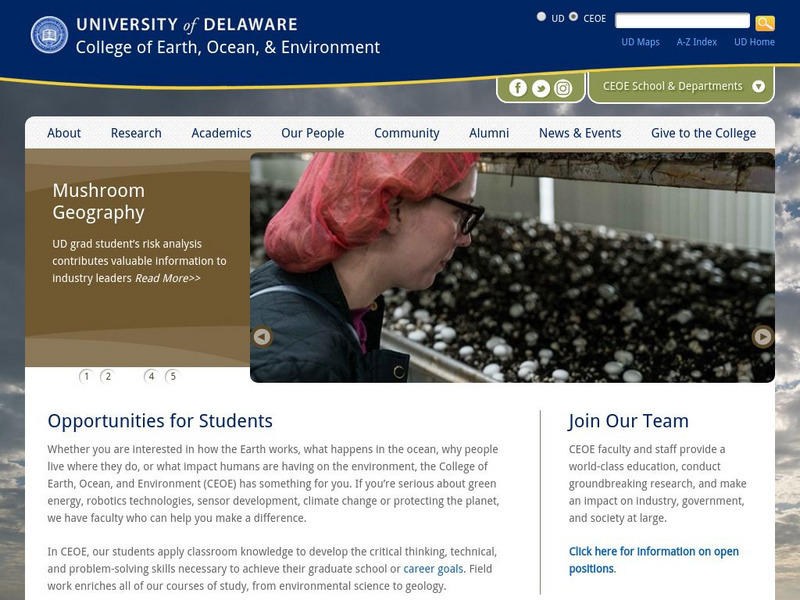Science Struck
Science Struck: A Helpful Guide to Understand the Photic Zone
The photic zone is the upper layer of the ocean where sunlight can penetrate and support photosynthesis. This article explains the characteristics of this zone, the food chain that exists there, the adaptations of the plants and animals,...
University of Southern California
Usc: The Composition of Ocean Water
This site gives background information to ocean water and its contents. It has a link to an detailed chart showing the minerals and their content amount in ocean water. It also has links to activities.
Science Buddies
Science Buddies: Can Water Float on Water?
Of course it can, you say: ice is water and ice floats. And you're right. But we're talking about water in the liquid phase Can liquid water float on water? The goal of this project is to investigate what happens to layers of water with...
Woods Hole Oceanographic Institution
Woods Hole Oceanography Institute: Activity: Demo for Density
In this experiment, students look at Deep Hypersaline Anoxic Basins, or DHABs, that are present in the Eastern Mediterranean, and make a model of a DHAB to investigate how liquids that have different densities can form layers. This...
Curated OER
The Ocean
The National Weather Service presents "The Oceans" a complete site of the worlds water. Including information on layers of the ocean, waves, tides, and more. Also includes learning lessons and review questions.
Libre Text
Libre Text: Wind Stress
The force exerted by the wind on the ocean surface gives rise to a vertical velocity gradient in the upper boundary layer of the ocean. Essentially, the wind adds momentum to the ocean surface which is then transported downward through...
Science Struck
Science Struck: Interesting Facts About the Abyssal Zone
The Abyssal Zone lies deep in the ocean in the pelagic layer between 4,000 to 6,000 m or 13,000 to 19,500 ft. Learn about some of the unique life forms that call this zone their home, how they have adapted to the extreme pressure and...
Curated OER
Surf's Up!
The National Weather Service presents "The Oceans" a complete site of the worlds water. Including information on layers of the ocean, waves, tides, and more. Also includes learning lessons and review questions.
Science Struck
Science Struck: The Differences Between Benthic and Pelagic Zones
Learn the characteristics of these two oceanic zones and of the plants and animals that live in them.
NOAA
Noaa: Structure of the Earth [Pdf]
Create a model to help learn the layers and structures within the Earth. Identify characteristics of each layer of the Earth.
Missouri Botanical Garden
Missouri Botanical Garden: Giant Kelp
Learn about forests under the Pacific Ocean! Giant kelp is a forest under the ocean that is divided into layers based on the kind of animal life found there. Kelp is useful in making adhesives, dairy products, and pharmaceutical...
Science Struck
Science Struck: Facts About the Marine Biome
Describes the characteristics of the marine biome, the plants and animals that live in each of the four ocean zones, coral reefs and estuaries, the climate of the marine biome, and the marine food web.
Other
Moorland School: Earth Science Zone: The Structure of the Earth
Take a look at the Earth from the inside out. This site shows the different layers of the earth with an explanation of the rocks and materials in each layer. Includes a quiz on the structure of Earth.
Center for Educational Technologies
Nasa: Classroom of the Future: Spheres: Lithosphere
At this site from the NASA Classroom of the Future, you can learn about the many different layers of the earth and see what the earth would look like cut in half.
Khan Academy
Khan Academy: What Is the Biosphere?
This article explains that as our knowledge of life on the planet evolves, we've come to use the word biosphere as a way of explaining the entire intertwined network of life on Earth. This concept combines an understanding of geology,...
University Corporation for Atmospheric Research
Ucar: Introduction to the Atmosphere
A detailed overview of the Earth's atmosphere, with explanations about atmospheric properties, the structure of the atmosphere, its four layers, atmospheric processes, energy heat transfer, conduction and convection, and radiation. All...
Other
University of Delaware: Plate Tectonics
This site is a very simple overview of plate tectonics. It includes a map of all the major plates and a diagram of the layers of the earth.
NASA
Nasa: Weather
Though we live on the surface of the Earth, we actually live at the bottom of an ocean of air. Dynamic layers of air interact with the Earth's surface and the Sun's energy to produce the phenomenon of weather. The atmosphere is...
Energy4Me
Energy4me: Exploring Oil Seeps
How does oil seep naturally from beneath layers of rock to the surface of the ocean?
Idaho State University
Global Wind Systems [Pdf]
A great description of the global scale circulation and heat energy. Discusses a single-cell model, a three-cell model, jet streams and more.
Other popular searches
- Ocean Layers
- Ocean Layers Sunlight Zone
- Layers of Ocean Water
- 3 Layers of Ocean
- Ocean Layers Salinity







